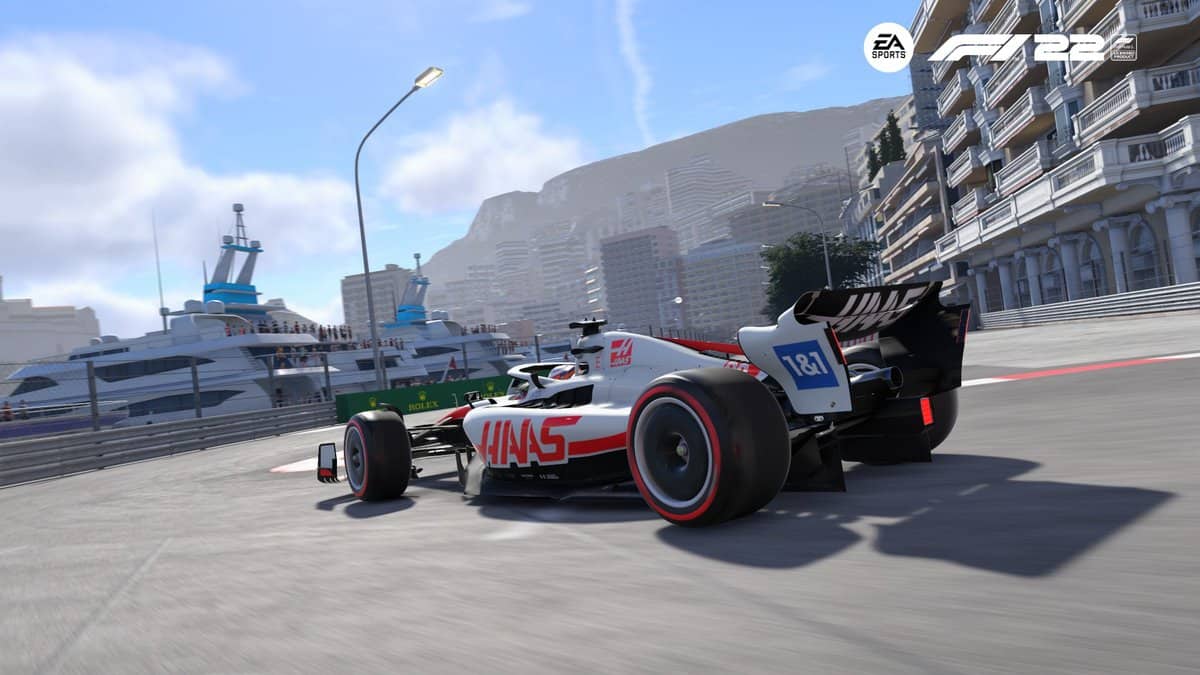Each track in F1 22 has its own unique track conditions which is why you need to tune and setup your car differently for each track in F1 22. For this, you’ll need to understand how the fundamental features of your car, such as the Aerodynamics, Suspension and Brakes work and how you can tune them for each of the different tracks.
To help you out with that, we’ve prepared this Best F1 22 Car Setups guide where we’ll be walking you through all the tips you need to know about your car’s Aerodynamics, Suspension and Brakes as well as direct you to the best setups for each track.
F1 22 Best Car Setups
- F1 22 Abu Dhabi Setup
- F1 22 Australia Setup
- F1 22 Austria Setup
- F1 22 Azerbaijan Setup
- F1 22 Bahrain Setup
- F1 22 Belgium Setup
- F1 22 Brazil Setup
- F1 22 Britain Setup
- F1 22 Canada Setup
- F1 22 France Setup
- F1 22 Hungary Setup
- F1 22 Italy Setup
- F1 22 Imola Setup
- F1 22 Jeddah Setup
- F1 22 Japan Setup
- F1 22 Mexico Setup
- F1 22 Miami Setup
- F1 22 Monaco Setup
- F1 22 Netherlands Setup
- F1 22 Singapore Setup
- F1 22 Spain Setup
- F1 22 USA Setup
Aerodynamics
The Aerodynamics of your car will have a great impact on how it handles corners. In the Aerodynamics section of your car’s setup, you’ll see two options: Front Wing Aero and Rear Wing Aero.
When you increase the value of these Aerodynamics settings, the wings of your car will create more downforce, which means that your car will have more aerodynamical grip. In layman’s terms, your car’s tires will be able to put more pressure on the race track.
When you have a high aerodynamical grip, you’ll be able to quickly maneuver through corners.
Keeping this in mind, you may think that you should always just set the Aerodynamics settings to their highest value, but this comes with some considerable downsides.
As you increase the Aerodynamic values, you also increase the chances of your car oversteering. When your car oversteers, it loses balance, and in turn, loses some of its speed.
So if you set the Aerodynamic values too high, you’ll lose top speed but will be able to maneuver through corners better. And if you set them too low, you’ll gain top speed but will have a tough time making it through sharp corners.
When setting these values, you need to first take a look at the structure of the track. If the track has loads of corners, then you’ll need to increase Aerodynamics. And if the track is mostly straight lines, then you’ll be free to set the Aerodynamic values low to be able to gain more top speed.
Suspension
In the Suspension category of your car’s setup, you’ll see the following options:
- Front Suspension
- Rear Suspension
- Front Anti-Roll Bar
- Rear Anti-Roll Bar
- Front Ride Height
- Rear Ride Height
Some people don’t take their car’s suspensions seriously, which is a grave mistake. The softer your car’s suspension is, the easier it’ll be to lean into sharp turns and apexes on the track, but since your suspension will be soft, your car will vibrate; causing there to be unwanted airflow under the car.
As you strengthen your suspensions, this problem will go away, but you’ll have a harder time clearing corners, so you’ll need to adjust your Aerodynamics to compensate.
An interesting thing to note is that if you strengthen your suspensions too much, it starts to cause the exact same airflow issue that you would have if your suspension were too soft.
So you need to strengthen your suspensions in such a way so that you eliminate the airflow problem but also retain your corner-maneuvering finesse.
Brakes
There are two settings under the Brakes category: Brake Pressure and Brake Bias. When you dial the Brake Pressure up, you’ll be able to have your car slow down at a much faster rate, but this will cause overheating and wear on your tires (unless you’re playing Time Trial mode).
Ideally, you should have your Brake Pressure just slightly below the maximum value (100%). As for the Brake Bias, this setting is easier to understand as the game allows you to adjust Brake Bias while you’re in the middle of a race.
This setting governs if the Brake Pressure acts more on the front tires or the back tires.
When you set the option more to the left, it will make your car more stable as you brake. However, it will also increase the chances of your wheels getting locked up.
When you set the option more to the right, it will make your car less stable as you brake, but it will also make it less likely for your wheels to get locked up.
You can get away with having it right in the center (50%), but it’s generally better to set it more to the right (>50%) in F1 22. If you’re sensing understeering or oversteering when you break across the corners of the track, you can adjust it accordingly during the race.
